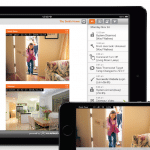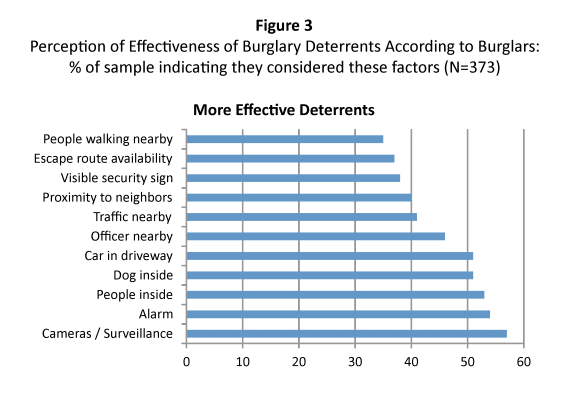Top 3 places to install security cameras
You should install security cameras near these 3 places:
- Front door
- First-floor windows
- Back door
Why these places?
Because those are the top 3 burglar entry points according to research done by the Washington Post.
So placing cameras in those locations increase the probability of deterring criminals or catching them in the act.
Features to consider for home surveillance cameras
First, we strongly recommend not buying hidden/spy cameras because of the legal issues involved.
Remember: one of the main goals of video cameras is to deter burglaries, meaning that the burglars actually need to see the camera. Clearly, a hidden camera can’t do that.
With that out of the way, you should focus on these features:
Wired vs. wireless
Do you want the reliability and video quality of a wired camera or the flexibility of a wireless camera?
Live view vs. recorded video
Do you want to view live video of your home or just view recordings later?
To view live video, get If you want to view recordings, consider a system with a digital video).
Image type (color, black and white, infrared, etc.)
Most cameras we sell record in color during the day and then at night switch to one of three modes:
- Black & white– Video cameras switch to black and white mode at night. This allows them to produce a clearer picture in less light.
- Intensifier– Other cameras have an intensifier mode for night. This means they increase the ambient light (environmental light) levels so you can see more. Of course, this means if there is no ambient light at all, there will be no image.
- Infrared (IR)– Infrared cameras work even in low-light settings. These cameras send out infrared signals and record what is bounced back. Since IR is invisible to humans, the cameras can record what’s happening even in what seems like pitch black to the naked eye.
Image quality (TVL of resolution)
The quality of the image a video camera captures is measured in TV lines (TVL). A higher TVL number = better resolution quality.
The typical home surveillance camera is between 350 and 400 TVL. High-resolution cameras can go up to 800 TVL, but you probably won’t need that high quality in your home.
Coverage (range of view)
This tells you what will be in the view of the camera and how wide of a viewing angle it will record. Make sure your camera can cover the area you’re trying to record.
Video monitoring
One of the benefits of adding video surveillance to your home is the ability to cut down on false alarms and to get faster response from authorities when an issue arises.
However, both of these benefits require your surveillance and security system to be monitored by a trusted security company. ROCK SOLID SECURITY ~ Call Rocky Beebe @ 770-403-4960






Alarm Detection Systems Home Security
June 27, 2018 11:42 amIf you protect these three areas, you will greatly secure your home: front door, first-floor windows, and your back door. Experiencing a robbery is an owner’s worst nightmare. A security system is your first line of defense against loss of property.